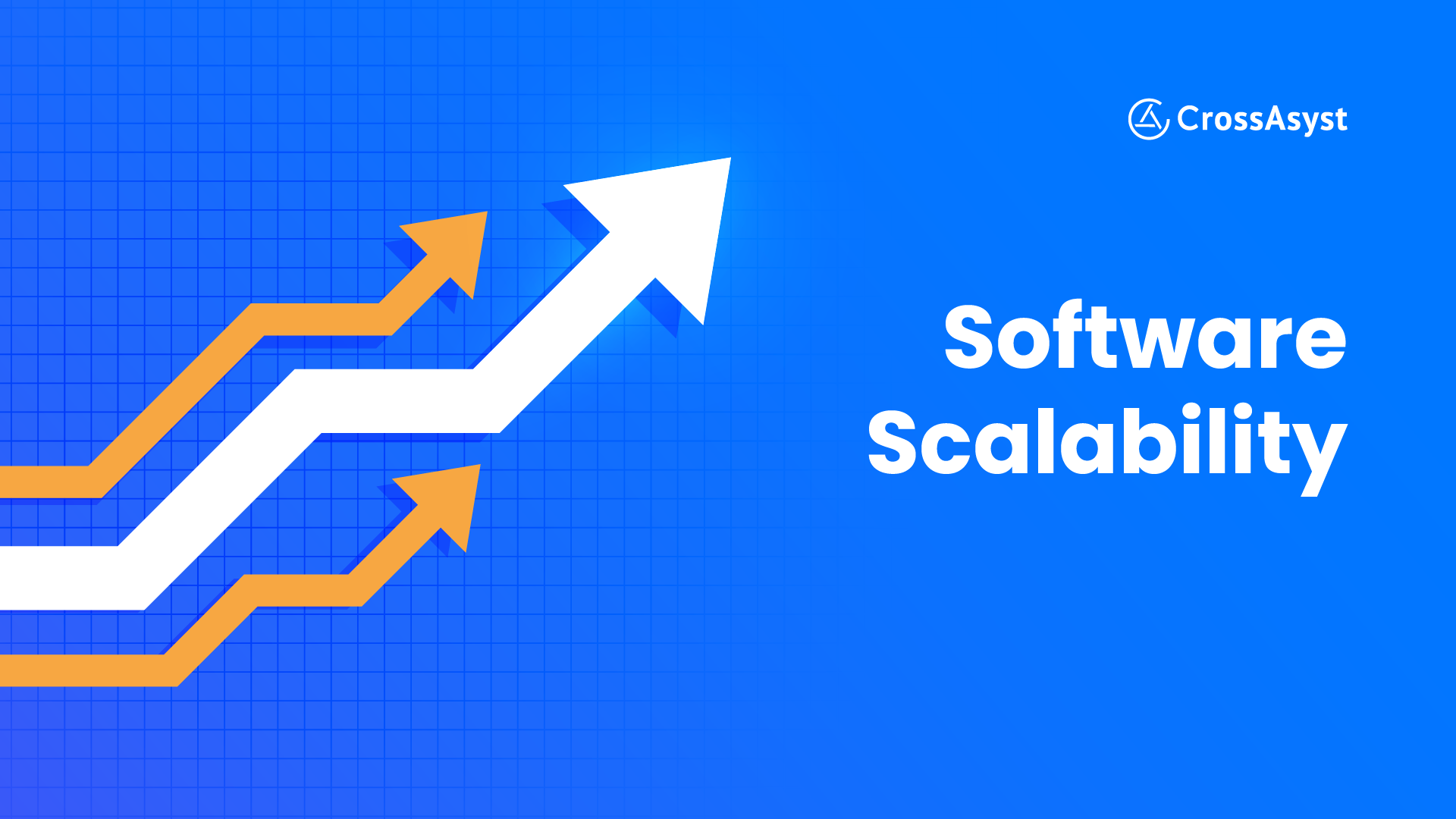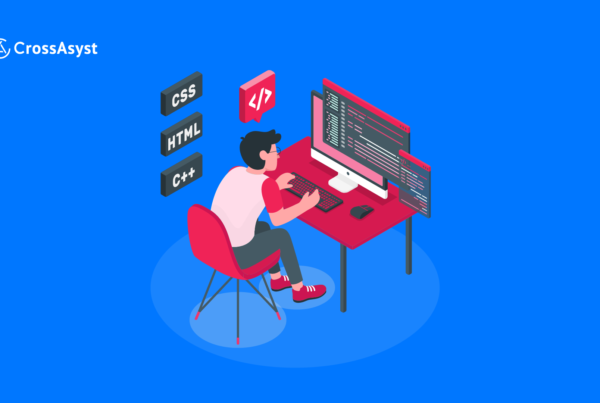Every so often, software, and indeed, entire platforms crash when they experience too much traffic. This can often be seen when ecommerce platforms get swarmed by shoppers during the holiday season.
These instances are prime examples of software solutions that did not pay enough heed to scalability during the development stages. Let’s take a detailed look at what software scalability is, why it is important and how to achieve it.
Table of Contents
What is Software Scalability?
Software scalability refers to a system’s capacity to handle an increasing workload without compromising performance or requiring a complete overhaul. It’s about a software application’s ability to grow and expand as the demand for its services or features increases.
Here are two real time examples of software scalability.
1.Popular ecommerce platforms, such as Amazon or eBay, see huge volumes every day. However, the traffic to these websites increases exponentially during festivals and holidays.
It is only because the software is scalable that these platforms do not experience any downtime during these swells in customer volume.
2.Social media platforms also experience an increase in traffic on a daily basis, as new accounts are created and more people sign in. However the scalable nature of the software ensures that they remain stable even as their user base increases.
Types of Software Scalability
There are two primary types of software scalability.
Horizontal Scaling

Also known as “scaling out,” this involves adding more machines or servers to your infrastructure. It spreads the load and is often associated with cloud-based services.

Also called “scaling up,” this approach involves upgrading existing hardware or resources to handle increased demand. It can be costly and less flexible than horizontal scaling.
Here’s a table to help us compare the pros and cons of both these types.
| Horizontal Scaling | Vertical Scaling |
| Resources are added to handle extra load. | Resources are upgraded to handle extra load. |
| Is the best option when future loads are unpredictable. | Works best when you know how much load to expect. |
| Software can be scaled quickly and with no downtime. | Downtime is to be expected. |
| It is resilient to failure. | A single point of failure exists. |
| Scalability possibilities are theoretically infinite. | The scalability of a single device is limited. |
| Is complex and needs load management systems like Kubernetes. | Adaptation does not require changes in logic or configuration. |
| Is more expensive than vertical scaling. | Is more affordable. |
| Software speed depends on speed of node connections | Software speed is faster, since it is multi-threading on a single device. |
Why is software scalability important?
Software scalability adds to software development costs, and increases the development lifecycle. This is why a lot of businesses tend to shy away from investing in it during the development stages.
However, here are some compelling reasons why software scalability is important.
To Support Business Growth
As businesses evolve and expand, their software systems must grow in tandem. Scalable software ensures a smooth transition into a larger operation without the need for a disruptive overhaul.
This means you can add new users, products, and services seamlessly, reducing downtime and avoiding the costly process of building entirely new software infrastructures.
To Improve Performance and Reliability
Scalable software shines when the demand for your services surges. It maintains consistent performance levels even during spikes in user activity or traffic.
By handling increased loads with grace, scalable software enhances reliability and delivers a positive user experience. Users can access your services without frustrating lags or downtime, bolstering your reputation and user trust.
To Reduce Costs
Efficient scalability can be a cost-saving champion. By optimizing resource usage and scaling intelligently, you can make more effective use of your hardware and infrastructure. This can lead to significant savings on hardware acquisition, maintenance, and energy costs.
In essence, scalable software helps you do more with less, making it a financially prudent choice.
To Increase Agility and Innovation
Scalable software empowers your organization to remain nimble and innovative in a constantly changing market. It enables quick pivots and adjustments to meet evolving customer needs.
Whether it’s introducing new features, responding to competitive shifts, or exploring new markets, scalability provides the agility necessary to stay ahead in the fast-paced world of technology. It’s the key to gaining a competitive edge in your industry.
How to Achieve Software Scalability
Let’s now dive into key strategies that will help you achieve software scalability.

Design for Software Scalability
Right from the start of your software project, consider scalability as a fundamental aspect. Design your software with a modular and decoupled architecture. This means breaking it down into manageable, independent components.
When you need to expand, you can simply add or modify specific modules without affecting the entire system. This flexibility reduces the risk of introducing errors or causing system-wide disruptions during upgrades.
Create the Ability to Integrate a Variety of Applications
In the modern tech landscape, software rarely operates in isolation. Ensure that your software can seamlessly integrate with other applications, services, or third-party tools. This integration capability enables you to extend your software’s functionality without undertaking major overhauls. It allows your system to evolve and adapt to changing needs with ease.
Choose the Right Tools and Technologies
The choice of programming languages, frameworks, and databases significantly impacts your software’s scalability. Make informed decisions based on your project’s requirements and long-term scalability goals. Select technologies that are well-suited for your specific use case, as this can enhance your software’s performance and adaptability as it grows.
Use a Cloud-Based Platform
Cloud services offer dynamic resource allocation, which simplifies the process of scaling your software horizontally (adding more servers) or vertically (upgrading existing hardware). Cloud platforms also provide built-in tools for monitoring and managing resources, further streamlining the scalability process.
Choose Microservices over Monolith Architecture
Consider adopting a microservices architecture, which breaks down large, monolithic applications into smaller, manageable services. These microservices can be developed, deployed, and scaled independently, offering greater flexibility and efficiency in managing complex software systems.
Use a NoSQL Database
NoSQL databases are well-suited for handling large datasets and accommodating changing data requirements. Their schema-less and distributed nature allows for more agile data storage, making them an excellent choice for scalable applications.
Use Caching
Caching involves storing frequently accessed data in a readily available format. This can significantly enhance your software’s performance by reducing the need to repeatedly fetch data from the database. Caching is especially effective for applications with high read-intensive workloads.
Use a Content Delivery Network (CDN)
A Content Delivery Network (CDN) distributes your content to multiple locations, reducing the load on your main server and improving the user experience. CDNs enable faster content delivery and help scale your software by offloading traffic to geographically dispersed servers.
Enable Access Through APIs
By providing well-documented APIs (Application Programming Interfaces), you allow external applications to interact with your software effectively. This opens the door for integrations and collaborations with other systems, enhancing the versatility and scalability of your software.
Monitor and Test Your System
Regular monitoring and testing are essential for identifying performance bottlenecks and potential scalability issues. Proactively addressing these challenges ensures that your software continues to perform optimally as it grows.
Build Future-Proof Custom Software With Crossasyst
One of the key factors that sets successful businesses apart from the rest of the herd is consistent performance. If you’re building a software solution, you will want it to remain responsive and reliable, irrespective of the amount of traffic it needs to handle.
We at CrossAsyst understand this, which is why our team focuses on building scalable custom software solutions for our clients using best-in-class engineering and QA methodologies.
Our expertise in harnessing the capabilities of cloud platforms allows us to offer solutions that are easily scalable depending on shifting workloads. Our team’s usage of best practices across microservices architecture, automated scaling, CI/CD in DevOps and performance optimization ensures that your new custom software is ready for success, not just today, but well into the future.
Book a meeting with CrossAsyst today, and learn more about why industry leaders depend on us to build reliable, scalable custom software solutions.




